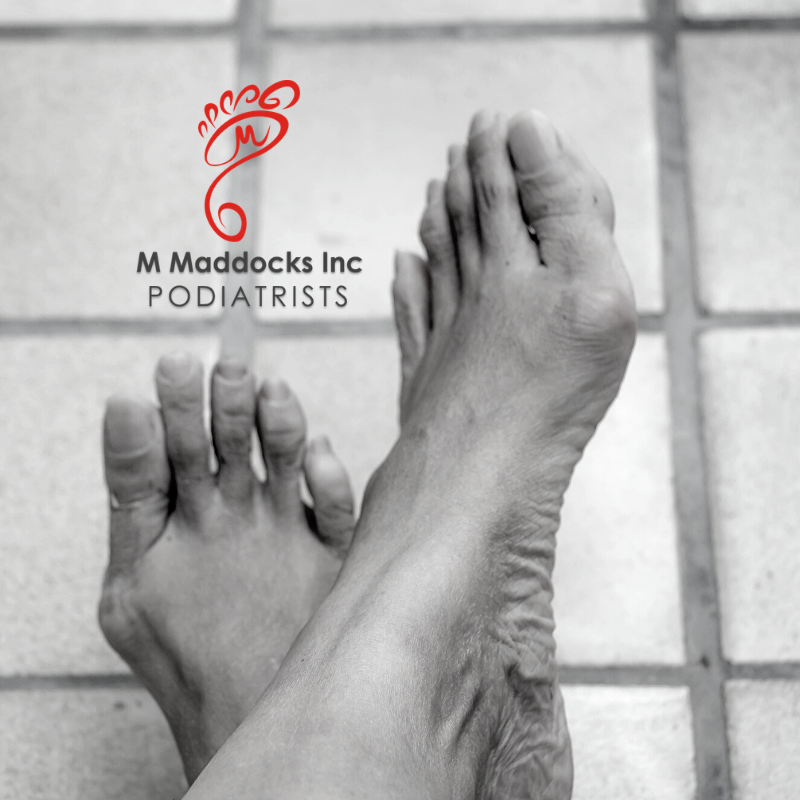Foot Health Awareness: Understanding and Managing Metatarsalgia with M Maddocks Inc
Submitted by: Nellah Joyi
Sandton, South Africa - Foot health is a crucial aspect of overall well-being, yet it’s often overlooked until discomfort or pain arises. M Maddocks Inc, a leading podiatric care provider, is shedding light on a common foot disorder that can significantly impact daily life:
metatarsalgia. This condition, characterised by pain and inflammation in the ball of the foot, can make even the simplest activities challenging. Understanding metatarsalgia, its causes, symptoms, and treatment options is essential for maintaining foot health and ensuring a pain-free lifestyle.
What is Metatarsalgia?
Metatarsalgia refers to pain in the ball of the foot, the area between the arch and toes. This condition affects one or more of the five metatarsal bones and joints in the foot, commonly targeting the 2nd, 3rd, and 4th metatarsal heads. The pain and inflammation associated with metatarsalgia can be debilitating, hindering your ability to walk comfortably and enjoy your favourite activities.
Causes of Metatarsalgia
Several factors contribute to the development of metatarsalgia:
- Excessive Pressure: Prolonged pressure on the metatarsals can lead to pain and inflammation. This pressure often results from standing or walking for extended periods.
- Specific Footwear: Shoes with rigid soles, such as work boots, can contribute to metatarsalgia by limiting the natural movement of the foot and increasing pressure on the metatarsal heads.
- Hard Surfaces: Walking or standing on hard surfaces like cement or tile floors can exacerbate the condition by placing additional stress on the feet.
- Arthritis: Arthritis can cause inflammation in the joints, including those in the feet, leading to metatarsalgia.
- Foot Injuries: Injuries from sports, car accidents, or repetitive stress can damage the metatarsals and/or surrounding structures, resulting in pain and discomfort.
Symptoms of Metatarsalgia
The symptoms of metatarsalgia can vary in intensity and duration. Common signs include:
- Pain or Inflammation: Typically felt in one or more of the metatarsal bones, especially under the 2nd, 3rd, or 4th metatarsal heads.
- Calluses: Repetitive pressure can lead to the formation of calluses under the affected joints, which may lead to discomfort.
- Acute, Recurrent, or Chronic Pain: The pain can be sudden and severe, come and go, or persist over time, affecting your ability to walk and causing significant discomfort in the forefoot.
- Swelling and/or Redness: The affected area may or may not show swelling or redness from the internal inflammatory process.
Diagnosis and Treatment Options
Accurate diagnosis is crucial for effective treatment. Podiatrists at M Maddocks Inc play a key role in diagnosing metatarsalgia. They will consider your medical history, conduct a thorough physical examination, and may use imaging tests to identify the specific cause of your pain. Proper diagnosis ensures that you receive the most appropriate and effective treatment for your condition.
Several treatment options are available to alleviate the pain and discomfort associated with metatarsalgia:
- Change of Shoes: Wearing shoes with proper support and cushioning can significantly reduce pressure on the metatarsals. Opt for footwear with a wide toe box and shock-absorbing soles to relieve stress on the forefoot.
- Custom Orthotics: Podiatrists can design and manufacture custom foot orthotics to redistribute pressure more evenly across the foot and alleviate pain.
- Additional Treatments: Depending on the severity of your condition, other treatments such as physical therapy, anti-inflammatory medications, or lifestyle modifications may be recommended.
Preventing Metatarsalgia
Prevention is always better than cure. Here are some tips to help you avoid metatarsalgia:
- Choose the Right Footwear: Invest in shoes that offer proper support, cushioning, and a wide toe box to reduce pressure on the metatarsals.
- Foot Care: Regularly inspect your feet for any signs of stress or injury. Maintaining good foot hygiene and addressing minor issues promptly can prevent them from escalating.
- Avoid Excessive Pressure: Be mindful of activities that place prolonged pressure on your feet. Take breaks, wear good shoes, and vary your activities to minimise repetitive stress.
Conclusion
Metatarsalgia can be a painful and disruptive condition, but with the right knowledge and care, it is manageable. If you’re experiencing painful symptoms under the balls of your feet, seek professional podiatric care to ensure accurate diagnosis and effective treatment. At M Maddocks Inc, we are dedicated to helping you reduce pain, optimise movement, and get back to doing what you love.
For more information, visit M Maddocks Inc at Medical Suites, UMED, 134 Grayston Dr, Sandown, Sandton, 2196, or call 072 046 5001,or click here to schedule an appointment
Contact: M Maddocks Inc Medical Suites, UMED 134 Grayston Dr, Sandown Sandton, 2196 Phone: 072 046 5001
Click Results
Nellah JoyiMany business owners struggle to consistently get new clients. At Click Results, we have a 5 step process that turns their website into a marketing machine that attracts new clients so that their businesses will grow again.
Latest from
- Expert Advice from Moreleta Service Centre: Protect Your Vehicle from Engine Overheating
- TT Waterproofing Highlights Five Key Signs Your Roof May Need Waterproofing
- Create a Will That Truly Reflects Your Values and Priorities
- The Chiropractors Offer a Holistic Approach to Lumbar Spine Disc Injuries
- Early Detection of Cylinder Head Problems Can Save Car Owners Thousands

